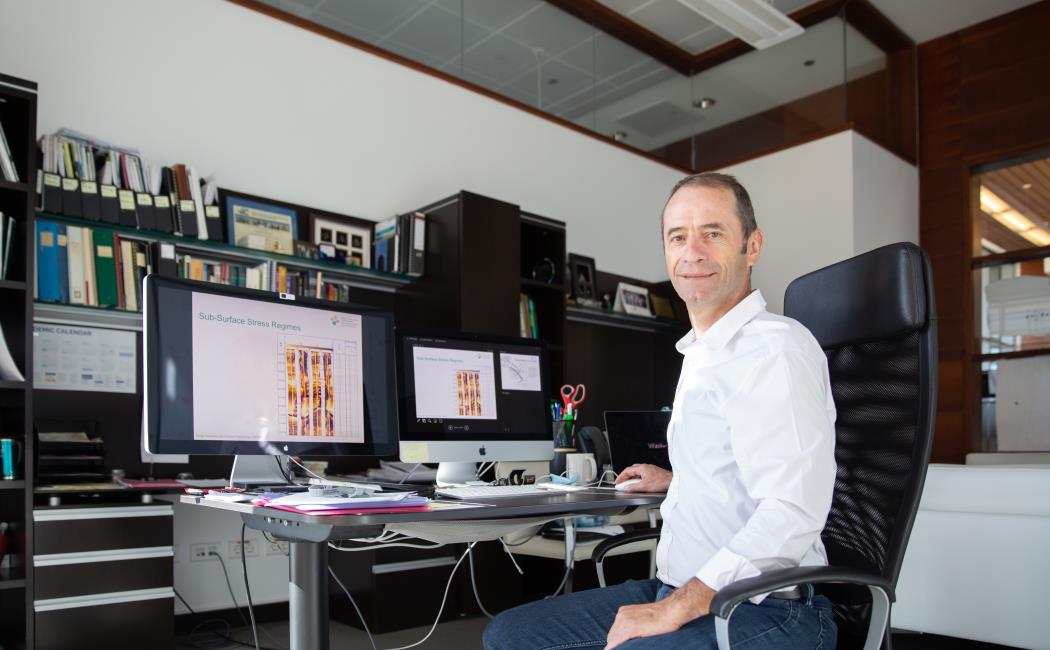.jpg?sfvrsn=39330263_0)
.jpg?sfvrsn=39330263_0)

02 February, 2023
By David Murphy
Thomas Finkbeiner, KAUST research professor of energy resources and petroleum engineering, has been appointed to the Editorial Board of Geomechanics and Geophysics for Geo-Energy and Geo-Resources.
The journal publishes original research, new developments, and case studies in the field of geomechanics and geophysics, with an application to energy and resources in the Earth’s subsurface. Coverage spans the full scope of geomechanics and geophysics, including theory and analysis, laboratory and field experiments, numerical methods and modeling techniques, engineering applications and technology development related to energy and resources.
Professor Finkbeiner’s research focuses on geo- and rock mechanics, rock physics and petroleum engineering, addressing fluid flow in porous and fractured rocks. His research investigates improving drilling practices, how reservoir rocks respond to changes in pore pressure and how this impacts fluid flow. More recently, he has also engaged in projects related to energy storage, CO2 sequestration and utilization, and geothermal systems with the aim of advancing such research activities in the Kingdom.
His ongoing project work relates to shales targeted for unconventional reservoir development, numerical simulations of drill pipe vibrations, modeling regional in situ stress fields and evaporite seal performance for CO2 injection. Furthermore, Finkbeiner and his team are also developing novel underwater compressed air energy storage systems and exploring geothermal systems along the Red Sea coast to harvest renewable energy.
“Analyzing, studying and simulating the subsurface and predicting coupled thermo-hydro-chemo-mechanical rock behavior—involving fluid flow in the matrix and fractures—are critical to addressing present-day energy needs,” he emphasized. “It is also essential to find lasting solutions that effectively remove CO2 from the atmosphere; store it in sufficiently large quantities, and further use it for the world’s energy needs; only the subsurface can provide these solutions.”
Source: PSE Division